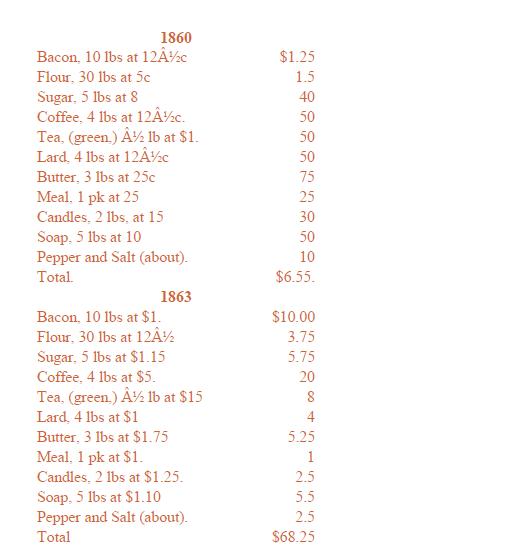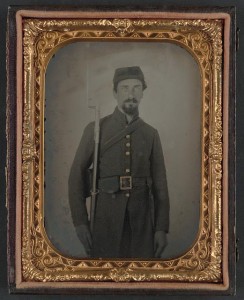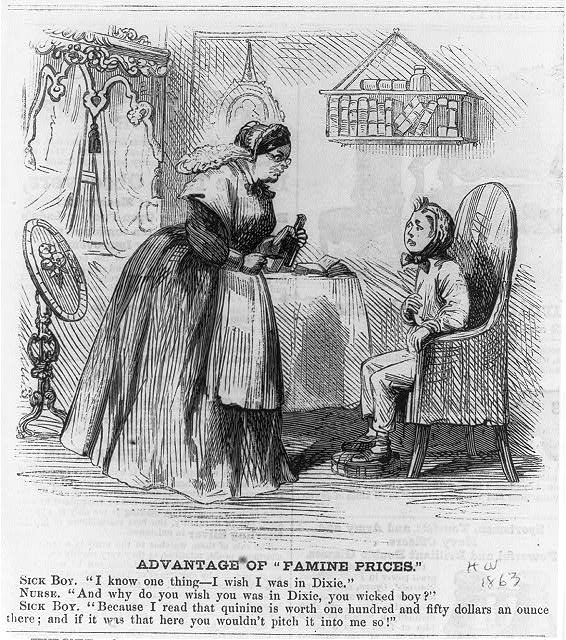Comparing market baskets from 1860 and 1863
A newspaper in the Confederate capital compared antebellum prices with 1863 prices and helped quantified the high inflation in Richmond since the war began (the basics in the baskets were at least ten times more expensive). The publication then jumped to the conclusion that the problem was solely the result of speculators charging exorbitant prices.
From the Richmond Daily Dispatch January 29, 1863:
The Results of extortion and Speculation.
–The state of affairs brought about by the speculating and extortion practiced upon the public cannot be better illustrated than by the following grocery bill for one week for a small family, in which the prices before the war and those of the present are compared:
So much we owe the speculators, who have staid at home to prey upon the necessities of their fellow citizens.
And the editors knew exactly what to do with these speculators.
From the same issue:
Put them in the army.
Our Generals can do no better service at present than seizing all the extortioners who are selling articles at such enormous prices to the soldiers and putting them in the army. Fellows who can make such famous charges should have bayonets put in their hands at once, and try their charging qualities upon the enemy.
_________________________________________________
It might not have been extortion. According to
InflationData.com, the most important factor in the Southern price increases was the expansion of the money supply.



